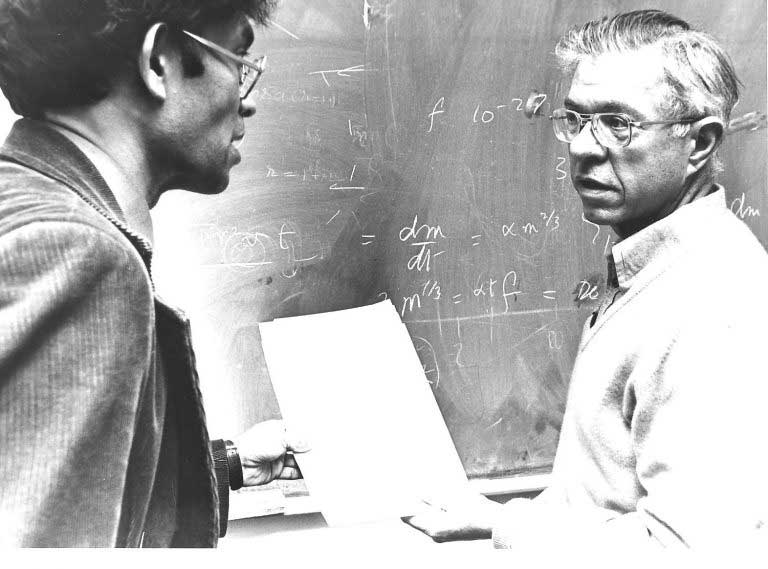Last Updated on February 26, 2023

The mainstream scientific explanation is that conditions on the early Earth favoured the formation of basic chemical building blocks of life that became dissolved in the oceans as well as in hydrothermal vents to form a ‘primordial soup’.
The chemicals in the soup underwent random combinations and a “chemical evolution” culminated in the spontaneous origin of the first living cells. This explanation faces many serious problems involving probability, or rather improbability. The conventional hypothesis proposes that the complexity of DNA and enzymes arose by random shuffling of chemicals over a very short period on the geological timescale. This implies a strong innate tendency for the self-assembly of living structures from non-living molecules, but despite many investigations in the laboratory there is no evidence whatsoever that such a tendency exists.
A radical alternative, that has never been popular, is the theory of Panspermia that holds that life on Earth was seeded from the wider cosmos. The particular version of this theory known as “cometary panspermia”, arguing that comets throughout the universe are the incubators and transporters of life, was first proposed in the 1980’s by the Sri Lankan-born astronomer and mathematician Chandra Wickramasinghe together with the British astronomer Sir Fred Hoyle. In recent years evidence in support of this theory has grown enormously, almost to the point of being compelling. This evidence appears to a large extent be ignored, denied or degraded by mainstream science and even by mainstream media outlets.
The most recent geological evidence shows that bacterial life existed on Earth 4.1 billion years ago, at a time when it is known that the Earth was being severely pummelled by comets. In 1986 when the Halley’s comet came under close scientific scrutiny in the space age, it became clear that comets contain material that is uncannily similar to living material – bacteria, viruses and their decay products. In the past two years the space probe Rosetta has found evidence that is fully in accord with the theory of a “living comet” and cometary panspermia as proposed by Wickramasinghe and Hoyle.
Yet this new evidence is given the most conservative possible explanation that is consistent with the old primordial soup theory. We are told in the mainstream media that comets carry organic molecules that are building blocks of life, and these had to be delivered to the Earth for the “miracle” of life’s origin to be accomplished.
In the past five decades bacteria as well as viruses have been discovered to have all the properties that make them ideally suited for space travel. Many experiments have shown that bacteria exceptionally hardy and can survive intense cold, heat, intense radiation and the harshest of conditions that make them ideal space travellers.
They can certainly survive millions of years travel through space and can be transported from planet to planet across the Milky Way. Not just microorganisms but seeds of plants and even tiny insects known as tardigrades. have been shown to possess an amazing ability to survive the conditions of space. All these properties could not have arisen if life and evolution had been confined to planet Earth. Both the origin of life and its later evolution required a continuing input of biological material from space.
The theory of Chandra Wickramasinghe and Fred Hoyle represents such an assault on conventional science that it has been resisted or denied at every turn. The recent discoveries of “habitable planets”, in their enormous numbers (over 100 billion) in our Milky Way galaxy alone, adds further credence to the theory that connects life across all possible cosmic habitats. Life must be a truly “cosmic phenomenon” and the biosphere of the Earth extends to the furthest reaches of the Universe, exactly as Chandra Wickramasinghe and Hoyle have been arguing for decades.
In 2001 Hoyle and Wickramasinghe collaborated with the Indian Space Research Organisation (ISRO) to search for bacteria in the stratosphere of the Earth that may have come from comets, and still continue to arrive here in vast number. They used a balloon launched to an altitude of 41 km, an altitude that wind-borne native Earth bacteria can never reach, and took samples under sterile conditions.
On return to Earth the samples were found to contain clumps of bacteria, different to the strains we are familiar with. The same results were obtained in several later balloon flights conducted both in India and in Sheffield in collaboration with Professor Milton Wainwright from the University of Sheffield. From 2014 onward Russian scientists have been studying surface deposits on the International Space Station that orbits at the height of 400km way above any contact with the Earth’s atmosphere. They have now reported the discovery of microorganisms including plankton-like structures that cannot have come from the surface of the Earth, and must be of extraterrestrial origin, almost certainly from comets.
Prof. Wickramasinghe told me:
“…This new discovery combined with very many others that have come to light over the past two decades establishes beyond doubt that life on Earth came from space and still continues to do so. We are well and truly creatures of the cosmos. A major paradigm shift that has been resisted for too long must finally be conceded…”
If the claim that bacteria are constantly falling to Earth from space holds up, this will be an enormous scientific advance that will revolutionise our entire view of life and the universe. Only time will tell.
